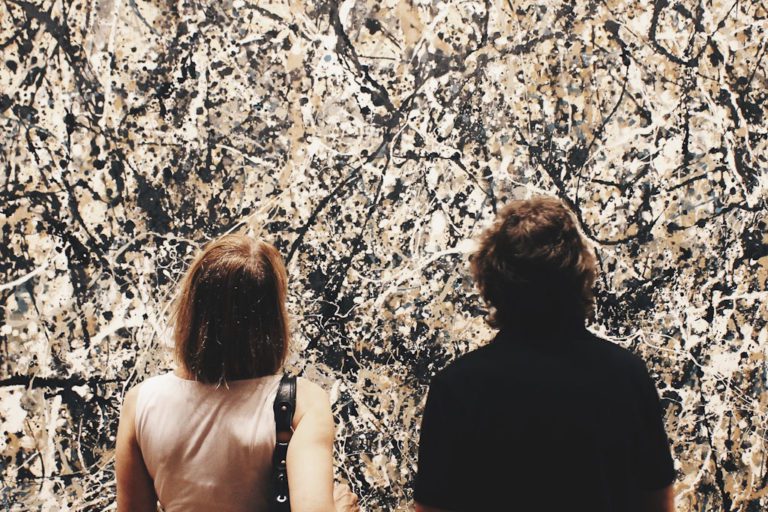LEGAL
FAKING IT

WORDS: Chris Nyst PHOTOGRAPHY Supplied & Brian Usher
Ever since the first collector paid good money for a pretty picture, faking it has been an art-form in itself.
WHAT’S in a name? After all, as the Great Bard once so poignantly observed: “That which we call a rose, by any other name would smell as sweet.”
It’s true. But on the other hand, in the lucrative world of high-end art, a name, particularly the right name – one, perhaps, as renowned as Johannes Vermeer, Jackson Pollock or Mark Rothko – can be absolutely everything. Pei-Shen Qian? Not so much.
Just ask Ann Freedman, the elegant gallerist and founder of New York’s prestigious FreedmanArt, on Manhattan’s trendy Upper East Side, a swank, sophisticated gallery which proudly boasts “our commitment is to the artist, and to bringing art and the collector together”. In what has been called – with true Uptown New York hubris – the greatest art-forgery scandal in history, between 1994 and 2009 Freedman presided over the sale of around $80 million worth of fake artwork carrying the priceless signatures of some giants of American 20th-century art.
According to US federal prosecutors, the scam began in the early 1990s, when an obscure Long Island art dealer by the name of Glafira Rosales approached Freedman, who was then the high-flying and influential director of the Knoedler Gallery – one of New York City’s most respected art establishments since 1846 – with a strange, intriguing tale.
Rosales told Ann Freedman she represented an anonymous foreign art collector of Eastern European descent, who had inherited from a relative – clandestinely tagged simply ‘Mr X’ – many previously unknown works of art produced by celebrated mid-century artists, including Jackson Pollock and Mark Rothko.
Pollock and Rothko were champions of Abstract Expressionism, the first specifically American art movement, developed in New York City in the 1940s. By then long since deceased, their work was worth a fortune.
So, naturally, Rosales’ story was incredibly exciting news for the art-obsessed Ms Freedman who, as curator of the Knoedler Gallery for more than 30 years, instantly recognised not only the historical significance of the find, but also its commercial value.
As the very credible Glafira assiduously explained to Freedman, during the 1950s the mysterious Mr X, a married man, had a homosexual affair with Mr David Herbert, a real-life gallery curator who died in 1955. Mr Herbert, so the story went, arranged access for Mr X to the studios of the Abstract Expressionists, enabling him to purchase paintings from the then-struggling artists, off the books. Mr X bought up big, according to Glafira, but all the paintings were then stashed away until after Mr Herbert’s death, in order to protect the couple from potential scandal.
Now, to Ann Freedman’s absolute delight, Mr X’s unnamed beneficiary was ready to unload these cultural treasures at bargain-basement prices. The New York art world went ballistic. The long-lost works of Pollock, Rothko and a host of others were hailed as beautiful examples of the masters’ style and artistry and over the next decade and more, Freedman sold them off to Knoedlers’ customers for millions, picking up lucrative commissions in the process. The only problem was, as it turned out, as beautiful as they were, the paintings weren’t produced in the 1950s by the Abstract Expressionists. They were painted in a garage studio in Queens by 73-year-old Chinese-American side-walk artist Pei-Shen Qian.
Of course, the purchasers all got precisely what they saw and the critics all agreed the fake paintings were excellent, original pieces in themselves. But instead of being an authentic Pollock or a Rothko, they were just a Pei-Shen Qian. To the collectors who had forked out millions, it just wasn’t quite the same.
When the inevitable string of law-suits started, as so often is the case in fraud offences, it was hard to work out where the truth began and ended, who knew what, how much and when. But one thing was certain: Ann Freedman and the Knoedler Gallery had raked in $80 million for virtually worthless imitations they picked up for comparative peanuts.
Was it the greatest art-forgery case in history? Well, maybe not. Ever since the first collector paid good money for a pretty picture, faking it has been an art-form in itself.
During the Nazi occupation of the Netherlands in World War II, the Dutch painter and art dealer Han van Meegeran traded a seemingly priceless work of art by the 17th-century Dutch master Johannes Vermeer to the powerful Nazi, Reichsmarschall Hermann Goring. So, when the war ended, van Meegeran was put on trial as a collaborator for handing over a national treasure to the Nazis. Facing a possible death sentence for treason, he revealed the shocking truth, admitting that the long-lost Vermeer he gave to Goring, and many other paintings he had sold as authentic works of the Old Masters, were in fact just forgeries he had painted himself. The droves of well-respected art historians and critics who had lauded the van Meegeran not-really-so-original masterpieces for years were stunned and appalled by the revelation, but not as much as the collectors who had paid tens of millions in today’s terms for the paintings.
Instead of the death penalty, van Meegeran got discredited, and was sentenced to twelve months imprisonment for forgery.
Sixty years later, the Knoedler Gallery was sued for millions by a string of wealthy socialites and, after 167 years in business, abruptly closed its doors in 2011.
Glafira Rosales spent three months in jail awaiting trial on fraud charges, but then pleaded guilty and was sentenced to time served.
The talented Mr Pei-Shen Qian fled back to China, where he is no doubt happily dabbling to this day.
And Ann Freedman reportedly still enjoys her morning coffee at the swanky cafes of the Upper East Side – and steadfastly tells anyone who asks she was the ‘central victim’ in the whole affair.

Chris Nyst









